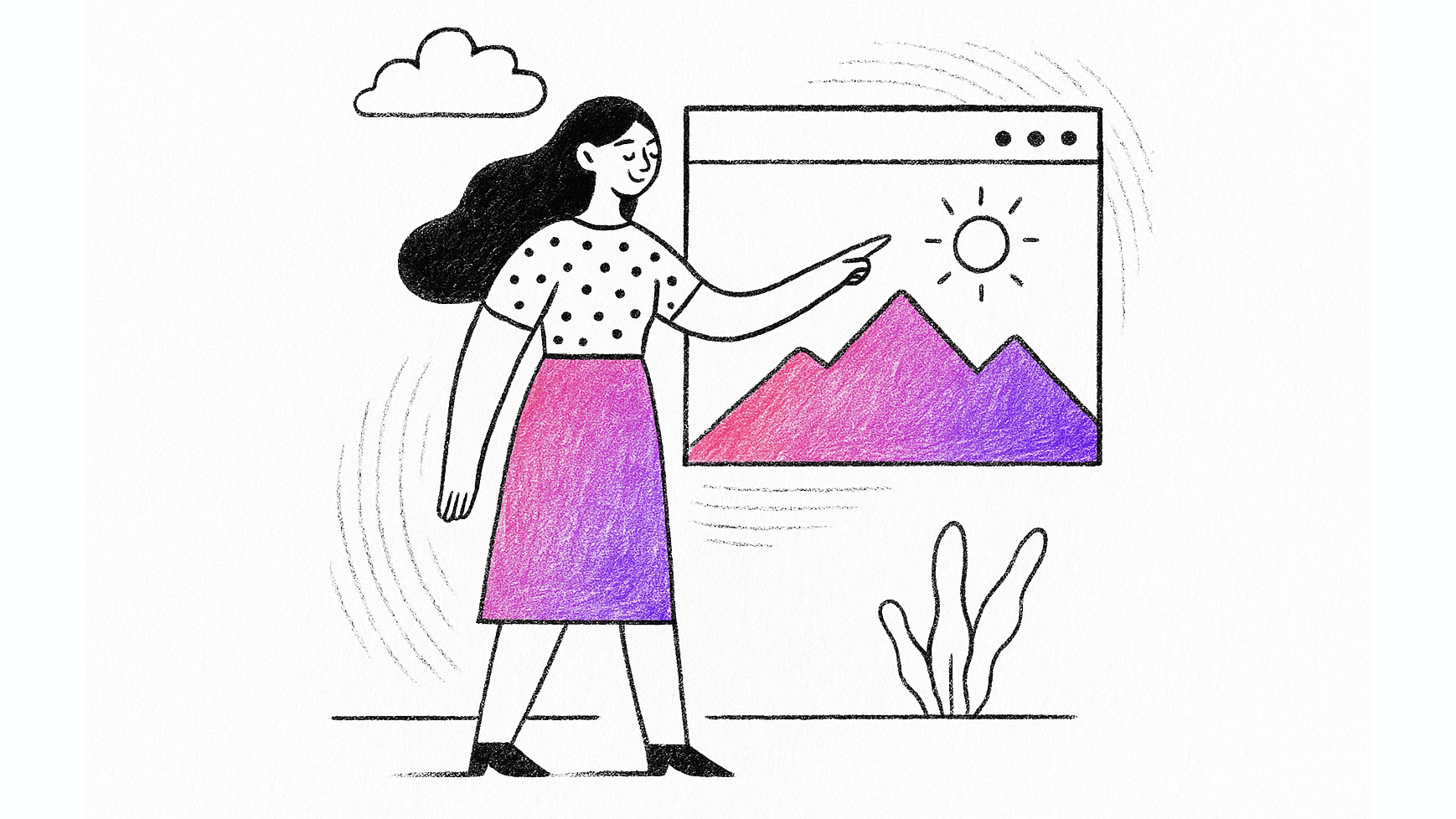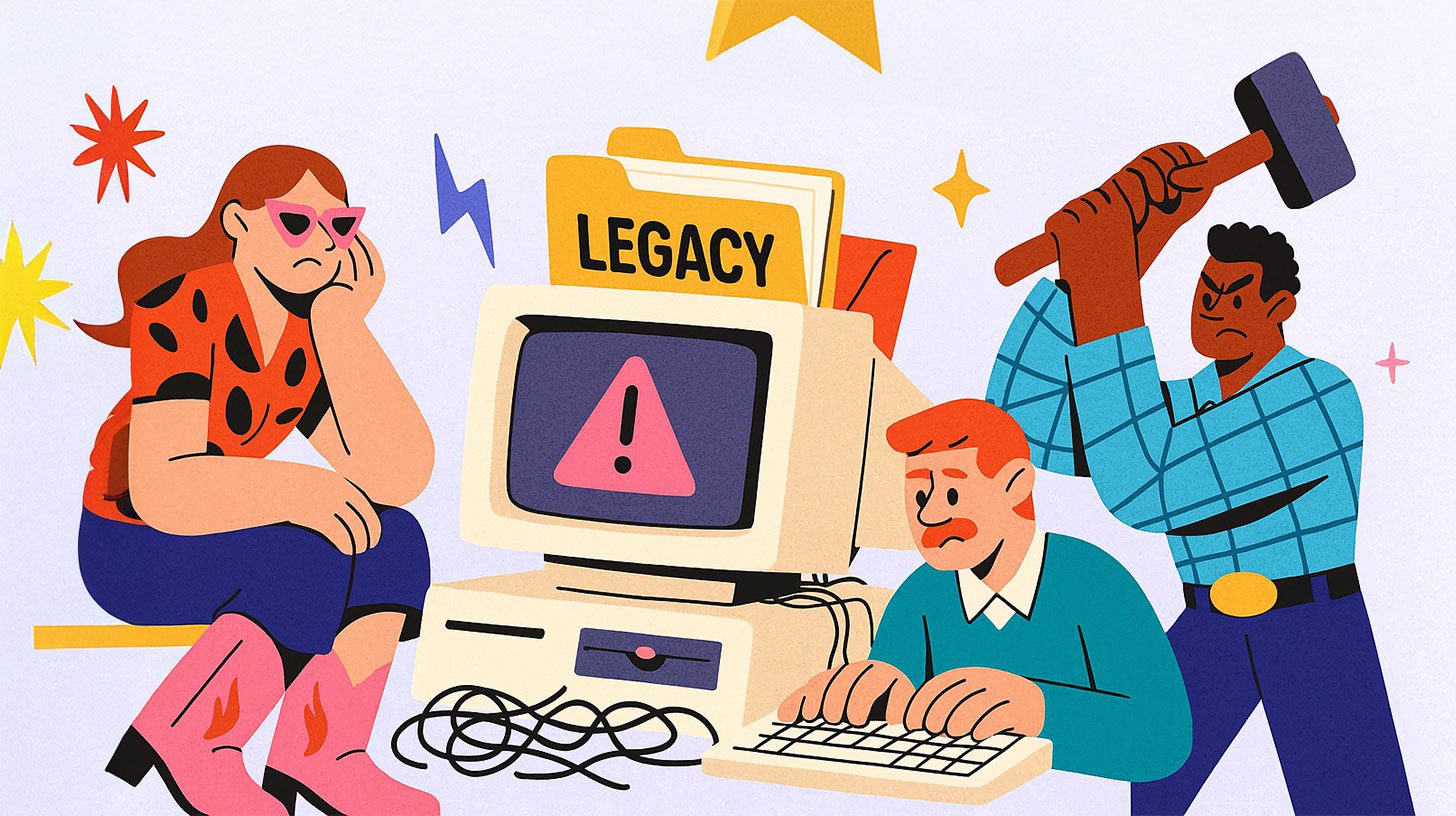In the vast digital landscape, where words dominate our screens, the art of typography in UX/UI design emerges as the unsung hero, steering the user experience ship through the waves of websites and software alike. Typography isn’t just about pretty fonts; it’s a strategic dance of letters and design elements, shaping the way we consume information.
In the realm of UX/UI design, where the battle for user attention is fierce, typography plays a pivotal role. According to recent statistics, a staggering 50% – 70% of online content relies on text, making typography a cornerstone of effective design. Join us on a journey through the intricacies of typography, from the historical roots to the contemporary digital playground, and discover how mastering the art can transform your designs into user experience rockstars.
Demystifying Typography in UX Design
A. Definition and Significance
Ever wondered about the secret sauce behind websites and apps that keep you hooked? It’s typography! Yeah, that art of arranging letters isn’t just about picking pretty fonts. It’s the unsung hero making your online experience readable, digestible, and visually top-notch.
Typography, in its essence, is the art of arranging letters and text to ensure the textual content is not only legible but also easily digestible and visually appealing. The significance of typography extends beyond mere aesthetics; it’s a powerful tool that influences how users perceive and engage with digital content.
Historical Roots in Gutenberg’s Bible
Typography isn’t a digital whiz-kid; it goes way back to the 11th century. Imagine the first sparks of typography flying off Gutenberg’s Bible. Fast forward to today, and the internet has opened up a font feast for designers, shaping the vibe and message of every digital product.
The historical roots of typography can be traced to Johannes Gutenberg’s invention of the printing press in the 15th century. The first notable example of typography emerged with Gutenberg’s Bible, marking a revolutionary leap in the way information was disseminated. Today, the digital era has propelled typography into a crucial element of user experience, allowing designers to choose from a vast array of fonts to convey messages effectively.
Impact of the Digital Age on Typography
In the digital realm, every font, style, and size decision is like a carefully crafted message to users. It’s not just about Comic Sans or Monotype Corsiva; it’s about creating an aesthetic that captivates, engages, and doesn’t send users running.
The advent of the digital age has transformed typography into a dynamic and integral aspect of user interface and user experience design. In the vast landscape of the internet, each font, style, and spacing choice contributes to the overall visual language of a digital product. It’s no longer just about choosing appealing fonts; it’s about creating an immersive and user-friendly experience that goes beyond aesthetics.
Key Elements of Typography
A. Typeface and Fonts
Let’s clear the air – what’s the deal with typefaces and fonts? Fonts are like the characters in a book, and a typeface is the overarching design style. Choose wisely, my friend, for they carry the weight of your digital charisma.
Understanding the distinction between typefaces and fonts is fundamental for anyone delving into typography in UX/UI design. A font is a graphical representation of text characters, while a typeface is a design style comprising multiple fonts that vary in weight, width, and style. The careful selection of typefaces and fonts is akin to choosing the right attire for a message, setting the tone and personality of the content.
B. White Space: The Silent Influencer
White space isn’t just empty background; it’s the Jedi of readability. Adjusting margins, line spacing, or padding can turn a cluttered mess into a text oasis. Increase white space strategically, and watch essential sections pop!
White space, often overlooked, is a powerful and silent influencer in the realm of typography. It refers to the empty space surrounding text, images, or other graphics in interfaces. Designers wield the magic wand of white space by adjusting margins, line spacing, or padding, profoundly impacting the overall readability, flow, and feel of the text. It’s a visual breather that transforms clutter into clarity.
C. Tracking and Kerning for Clean Readability
Tracking, or letter spacing for the layman, and kerning, the space between two characters, are like the unsung heroes of cleanliness in typography. They turn jumbled letters into a harmonious dance of words.
In the dance of typography, tracking and kerning take centre stage. Tracking involves adjusting the space for a group of type characters that form a word and text block. It’s the art of determining the appropriate spacing for all letters, contributing to clean and easily readable text. On the other hand, kerning, while similar to tracking, focuses on the space between two specific type characters. Together, they bring order to the visual rhythm of text, ensuring a seamless and harmonious reading experience.
D. Consistency: The Mark of a Good Designer
Consistency isn’t just for diets; it’s for typography in UX/UI design too! Mismatched fonts can turn your design into a visual rollercoaster. Establish hierarchy, direct the use of fonts, and let your users navigate with ease.
Consistency in typography is the hallmark of a seasoned designer. It involves establishing and maintaining uniformity in the use of typefaces, fonts, sizes, and formatting across a digital product. Without consistency, a design may appear messy, confusing, unattractive, and challenging for users to digest. A well-structured consistency becomes a guiding beacon, allowing readers to navigate effortlessly and subconsciously embrace the hierarchy of information.
E. Establishing Visual Hierarchy
Visual hierarchy is the unsung hero of UX/UI. Organise text by size, style, and weight to guide readers effortlessly. Headers shout, sub-headers speak, and quotes whisper – that’s the rhythm of a well-structured hierarchy.
In the symphony of typography, visual hierarchy orchestrates the rhythm and flow of information. Designers strategically organise text by determining the use of typefaces, styles, sizes, and weights to establish a clear hierarchy. Headers command attention, sub-headers guide the narrative, and quotes add a nuanced whisper to the overall composition. A well-structured visual hierarchy simplifies the user’s journey through the content, ensuring a seamless and enjoyable experience.
F. Alignment in Design
Aligning elements isn’t just for OCD designers; it’s for everyone who wants a clean, readable layout. Margins are the secret sauce, but a touch of creativity in that space is like adding a sprinkle of magic.
Alignment, often associated with precision and order, plays a crucial role in the readability and aesthetics of typography. It involves setting equal and adequate space, size, and distance between elements, be it text or graphics. While margins serve as the secret sauce in achieving alignment, a touch of creativity within that space adds a sprinkle of magic to the design. Striking the right balance between order and creativity ensures a clean, readable layout that captivates the audience.
G. Strategic Use of Colour and Contrast
In the palette of typography in UX/UI design, colour is a practical wizardry tool. Choose wisely to complement your background and avoid a psychedelic catastrophe. Contrasts, when used right, make your message pop, guiding users through the digital landscape.
The strategic use of colour and contrast transforms typography from a monochrome canvas into a vibrant and impactful masterpiece. As a designer, selecting colours that harmonise with the background and other graphic elements is crucial for creating a visually appealing composition. Avoiding the pitfalls of contrasting colours and finding the right balance enhances readability and ensures a seamless user experience. Contrasts, when applied judiciously, serve as signposts, guiding users through the digital landscape and emphasising key elements.
Typography in UX/UI Design
A. Capturing Attention and Encouraging Engagement
Good typography is your wingman in the digital dating game. It captures attention, encourages users to read, and keeps them from bouncing off your page faster than you can say “Helvetica.”
In the bustling digital arena, capturing user attention is akin to a delicate dance, and good typography takes the lead. Typography serves as the wingman, capturing attention, creating intrigue, and encouraging users to delve into the content. The choice of fonts, styles, and layouts sets the tone for engagement, ensuring that users stay on the page rather than bouncing away. In the realm of user experience, captivating typography is the secret sauce for keeping users hooked.
B. Enhancing User Experience with Well-Designed Typography
Typography isn’t just about looking good; it’s about making users feel good. Engaging content, readable fonts, and a clean hierarchy elevate the overall user experience.
Beyond aesthetics, the true power of typography lies in its ability to enhance the user experience. Well-designed typography goes beyond the visual appeal; it creates a seamless and enjoyable journey for users. Engaging content, coupled with carefully chosen fonts and a clean hierarchy, contributes to a positive and memorable user experience. When users not only see but also feel the design, typography becomes a conduit for connection and satisfaction.
C. Aesthetic Considerations for Trust and Recognition
In the world of fonts, aesthetics aren’t just a pretty face; they build trust. A consistent, well-thought-out typography design sends a message – “We’ve got our act together.”
The aesthetics of typography extend beyond mere visual appeal; they play a pivotal role in building trust and recognition. A well-crafted and consistent typography design sends a clear message to users – that the brand or platform pays attention to detail and has its affairs in order. This impression elevates users’ trust levels, fostering a sense of familiarity and recognition. In the competitive digital landscape, where trust is a precious commodity, aesthetics become a powerful tool for brand building.
Practical Tips for Typography in Design
A. Explore Typefaces and Fonts
Don’t be stuck in a font rut; explore the wild world of typefaces. Match them with your audience – big, playful typefaces for kids, sleek ones for the minimalist crowd.
The typography journey is an exploration of the vast and diverse world of typefaces and fonts. Designers are encouraged to break free from the font rut and delve into the rich tapestry of options available. Matching typefaces with the target audience becomes a crucial consideration, ensuring that the chosen fonts resonate with the intended users. For a younger audience, opt for big, playful typefaces, while a minimalist crowd might appreciate sleek and sophisticated fonts.
B. Limiting Typeface Usage for Clarity
In the font world, less is more. Stick to two typefaces max; anything more is a font frenzy that confuses your users and disrupts readability.
While the typography world offers a plethora of tempting choices, the mantra of “less is more” holds true. Limiting the usage of typefaces to a maximum of two prevents a font frenzy that can confuse users and disrupt readability. A clear and concise typographic palette ensures a cohesive and harmonious design, allowing users to navigate with ease and focus on the content rather than deciphering a myriad of font styles.
C. Scaling Fonts for Cross-Platform Consistency
Scale it like a pro! Designing for both desktop and mobile? Your fonts should be versatile gymnasts, performing seamlessly on every platform – iOS, Android, and Web.
In the era of cross-platform interaction, scaling fonts for consistency becomes a crucial consideration. A versatile typographic approach ensures that fonts perform seamlessly on various platforms, including desktop, mobile (iOS and Android), and web interfaces. Scaling fonts like a pro involves maintaining legibility and aesthetic appeal across different screen sizes, resolutions, and devices. A harmonious typographic experience on every platform contributes to a cohesive brand presence and user engagement.
D. Keeping Text Simple and Sweet
No copywriter? No problem. Keep it short, sweet, and to the point. Your users will thank you for not bombarding them with a novel.
Text complexity can be a stumbling block in effective communication. In the absence of a dedicated copywriter, simplicity becomes the golden rule. Keeping text short, sweet, and to the point ensures that users quickly grasp the message without feeling overwhelmed. A concise and straightforward approach to text aligns with the principles of clean design and user-centric communication, garnering appreciation from users who value clarity and efficiency.
E. Prototyping and Testing Designs
You’re a UX/UI designer, not a mind reader. Test those fonts, animations, and whitespaces. Experimentation is the name of the game; find what works best for your users.
Prototyping and testing form the dynamic duo in the designer’s toolkit. As a UX/UI designer, embracing experimentation is key to finding the optimal combination of fonts, animations, and whitespaces. Testing allows designers to gauge user responses, identify areas for improvement, and refine the typographic elements for an enhanced user experience. By wearing the hat of a tester, designers bridge the gap between intention and user perception, ensuring that the final design resonates effectively.
Conclusion: Elevating Typography in UX/UI Design
A. Importance of Testing and Experimentation
The magic happens in the testing arena. Try different fonts, play with animations, and dance with colours. A well-tested design is a user-friendly design.
As the curtain falls on the typography journey, the importance of testing and experimentation takes centre stage. The magic of effective typography unfolds in the testing arena, where designers try different fonts, play with animations, and dance with colours. A well-tested design isn’t just visually appealing; it’s inherently user-friendly. Testing serves as the compass, guiding designers to navigate the nuances of user perception and ensuring that the final typographic composition aligns seamlessly with user expectations.
B. Assessing Font Compatibility Through Overlays
Overlay those fonts; if their skeletons match, you’ve found the font soulmates. Compatibility is the key to a harmonious and visually pleasing design.
In the realm of typography, assessing font compatibility becomes a final act of finesse. Overlaying fonts and observing if their skeletons match is akin to finding font soulmates. Compatibility is the linchpin for a harmonious and visually pleasing design. A careful evaluation of how fonts complement each other ensures a cohesive and unified typographic identity. Just as in human relationships, the compatibility of fonts determines the success of their visual collaboration, resulting in a design that resonates and captivates.
Ready to turn your designs into user experience rockstars? Book a free 30-minute consultation with the team of experts here at SourceCodeStudio if you’re looking for professionals to elevate your next software or website project. So there you have it, a journey through the art of typography in the digital realm. Master these typography tricks, and your designs will be the rockstars of user experience! 🌟







